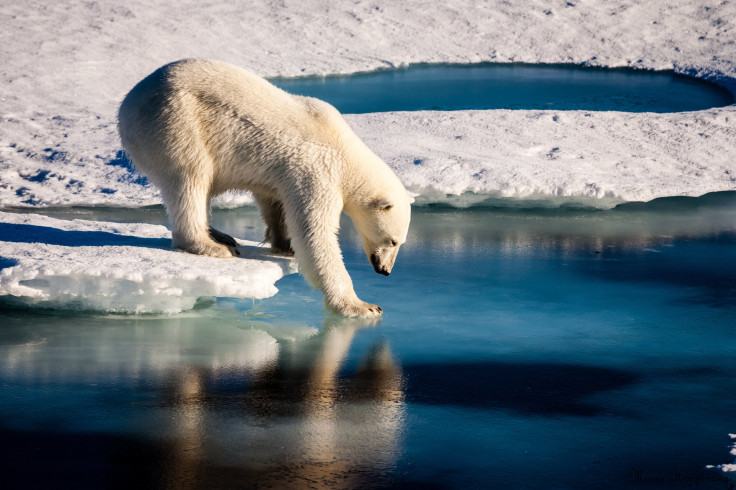Climate Change Facts: Polar Bears Spending More Time Combating Drifting Sea Ice

Polar bears living in rapidly changing environments faced with dwindling sea ice also are facing a treadmill-like effect from the flowing ice. Research by the U.S. Geological Survey and the University of Wyoming shows this treadmill is forcing the bears to spend more energy than they’re used to. And they're spending all this energy just to stay in one place.
The study specifically examined the changing drift rates of sea ice and how it impacts the lives of polar bears. The study found these increasing rates probably made the psychological stress the polar bears suffer even worse.
Read: Larsen C Ice Shelf Break Rapidly Heading Toward Creating Massive Iceberg
Sea ice sits atop the water and as water moves, so does the ice. The thinner the pieces of ice get and the less area they cover, the lighter they are and the more quickly they travel. This is significant for polar bears because the bears use the ice as a platform for hunting. The bears pretty much solely eat seals, which live in water while the bears live on land. So the ice provides a sort of bridge for the bears to gain access to the seals.
The results were derived from a combination of data on sea ice flow from the National Snow and Ice Data Center and from radio-tracking data from adult female polar bears that are tracked with collars, the USGS said. The data was collected during two time periods, 1987-98 and 1999-2013, to allow for different sea ice characteristics.
“These were very intensive analyses requiring advanced computational capabilities,” said Shannon Albeke, who worked on the research with the University of Wyoming. They were able to estimate that each polar bear would need to consume one to three more seals a year to make up for the extra energy spent due to the increase in ice float speed. The bears also are spending more energy because the ice is constantly melting and the landscape is changing.
Read: Climate Change Threatens Polar Bears Using Arctic Wind To Hunt Seals
The bears expelled this energy while moving eastward against the westward drift to remain in their home zones in the Arctic. This is increasing their active time by about 7.6-9.6 percent. Increasing their energy output by 1.8-3.6 percent depending on a few factors including their reproductive status.
Sea ice drift is just one of the challenges polar bears face brought on by climate change and rising temperatures. The World Wildlife Fund classified polar bears as “ vulnerable” though the bears are learning to adapt and survive with less ice.
The results of the study were published Tuesday in Global Change Biology.
© Copyright IBTimes 2024. All rights reserved.





















